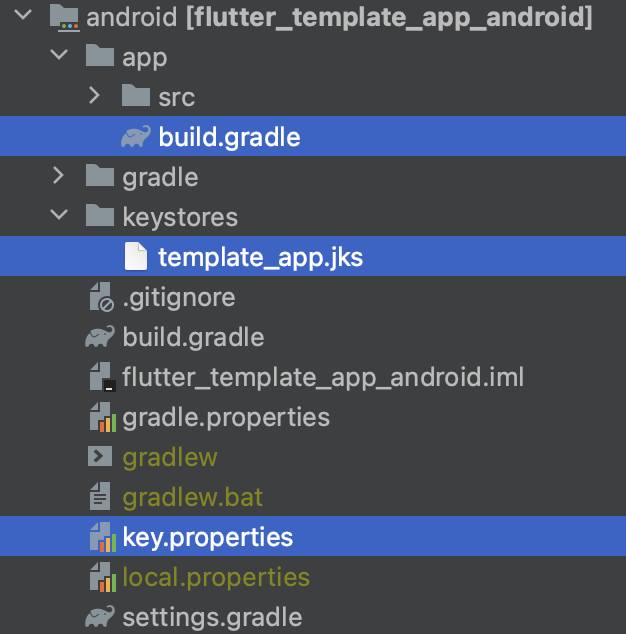flutter_flavorizr_extended 0.0.9  flutter_flavorizr_extended: ^0.0.9 copied to clipboard
flutter_flavorizr_extended: ^0.0.9 copied to clipboard
extended flutter_flavorizr for updateRun
Flutter Flavorizr Extended #
TLDR; #
Differences from the Original flutter_flavorizr: #
- No Overwriting of Android signingConfig: The signingConfig section in Android is no longer overwritten.
- Compatibility with Existing Projects: Running the original flutter_flavorizr on an existing project could cause errors due to file references and base structure dependencies. This has been addressed.
- No Overwriting of Custom Dart Files: After running flutter pub run flutter_flavorizr_extended for the first time, we avoid overwriting .dart files that you may have manually modified. The following processors are skipped in subsequent runs:
// 'flutter:flavors',
// 'flutter:app',
// 'flutter:pages',
// 'flutter:main',
// 'flutter:targets',
Installation #
- Add the following in your buildspec.yaml
dev_dependencies:
flutter_flavorizr_extended: ^0.0.7
Getting Started with working Example Configuration: #
Step 0: Configure pubspec.yaml #
Assume we need have 4 flavors named: development,qa,uat,prod
name: flutter_template_app
description: "A new Flutter project."
publish_to: 'none'
version: 0.1.0
environment:
sdk: ^3.5.3
dependencies:
flutter:
sdk: flutter
dev_dependencies:
flutter_test:
sdk: flutter
flutter_lints: ^5.0.0
flutter_flavorizr_extended: ^0.0.4
flutter:
uses-material-design: true
flavorizr:
flavors:
development:
app:
name: "FlutterTemplateApp"
android:
applicationId: "go.template.flutter"
generateDummyAssets: true
icon: "assets/images/icons/appicon.png"
customConfig:
applicationIdSuffix: "\".development\""
versionNameSuffix: "\"Dev\"" # Don't forget to escape strings with \"
signingConfig: signingConfigs.debug
ios:
bundleId: "go.template.flutter.development"
generateDummyAssets: true
icon: "assets/images/icons/appicon.png"
buildSettings:
qa:
app:
name: "FlutterTemplateApp"
android:
applicationId: "go.template.flutter.qa"
generateDummyAssets: true
icon: "assets/images/icons/appicon.png"
customConfig:
applicationIdSuffix: "\".qa\""
versionNameSuffix: "\"QA\"" # Don't forget to escape strings with \"
signingConfig: signingConfigs.qa
ios:
bundleId: "go.template.flutter.qa"
generateDummyAssets: true
icon: "assets/images/icons/appicon.png"
uat:
app:
name: "FlutterTemplateApp"
android:
applicationId: "go.template.flutter"
generateDummyAssets: true
icon: "assets/images/icons/appicon.png"
customConfig:
applicationIdSuffix: "\".uat\""
versionNameSuffix: "\"UAT\"" # Don't forget to escape strings with \"
signingConfig: signingConfigs.uat
ios:
bundleId: "go.template.flutter.uat"
generateDummyAssets: true
icon: "assets/images/icons/appicon.png"
prod:
app:
name: "FlutterTemplateApp"
android:
applicationId: "go.template.flutter"
generateDummyAssets: true
icon: "assets/images/icons/appicon.png"
customConfig:
signingConfig: signingConfigs.release
ios:
bundleId: "go.template.flutter"
generateDummyAssets: true
icon: "assets/images/icons/appicon.png"
Step 1: Ensure the Icon Exists: #
Make sure your app icons is correctly placed in the specified path.
Step 2: Android Signing Configuration: #
Following the steps to make sure all the signingConfigs listed in the pubsec.yaml exists
-
1: Generate a Signing Key #
Run this command to create a keystore for signing your app:
keytool -genkey -V -keystore template_app.jks -storetype JKS -keyalg RSA -keysize 2048 -validity 10000 -alias template_app_key ``` -
2: Organize Your Keystore #
- Create a folder called keystores and place the generated template_app.jks file inside it.
-
3: Create key.properties #
Create a file named key.properties with the following content. Never push this file to public repositories!
- Note after 2,3 you should have folder structure like the following:

development.keyAlias=template_app_key development.keyPassword=<Your password> development.storeFile=../keystores/template_app.jks development.storePassword=<Your password> qa.keyAlias=template_app_key qa.keyPassword=<Your password> qa.storeFile=../keystores/template_app.jks qa.storePassword=<Your password> uat.keyAlias=template_app_key uat.keyPassword=<Your password> uat.storeFile=../keystores/template_app.jks uat.storePassword=<Your password> prod.keyAlias=template_app_key prod.keyPassword=<Your password> prod.storeFile=../keystores/template_app.jks prod.storePassword=<Your password> - Note after 2,3 you should have folder structure like the following:
-
4:Update app/build.gradle #
Add the following signingConfigs section to your app/build.gradle:
signingConfigs { debug { if (System.getenv()["CI"]) { // CI=true is exported by Codemagic storeFile file(System.getenv()["CM_KEYSTORE_PATH"]) storePassword System.getenv()["CM_KEYSTORE_PASSWORD"] keyAlias System.getenv()["CM_KEY_ALIAS"] keyPassword System.getenv()["CM_KEY_PASSWORD"] } else { keyAlias keyProperties['dev.keyAlias'] keyPassword keyProperties['development.keyPassword'] storeFile keyProperties['development.storeFile'] ? file(keyProperties['development.storeFile']) : null storePassword keyProperties['dev.storePassword'] } } qa { if (System.getenv()["CI"]) { // CI=true is exported by Codemagic storeFile file(System.getenv()["CM_KEYSTORE_PATH"]) storePassword System.getenv()["CM_KEYSTORE_PASSWORD"] keyAlias System.getenv()["CM_KEY_ALIAS"] keyPassword System.getenv()["CM_KEY_PASSWORD"] } else { keyAlias keyProperties['qa.keyAlias'] keyPassword keyProperties['qa.keyPassword'] storeFile keyProperties['qa.storeFile'] ? file(keyProperties['qa.storeFile']) : null storePassword keyProperties['qa.storePassword'] } } uat { if (System.getenv()["CI"]) { // CI=true is exported by Codemagic storeFile file(System.getenv()["CM_KEYSTORE_PATH"]) storePassword System.getenv()["CM_KEYSTORE_PASSWORD"] keyAlias System.getenv()["CM_KEY_ALIAS"] keyPassword System.getenv()["CM_KEY_PASSWORD"] } else { keyAlias keyProperties['uat.keyAlias'] keyPassword keyProperties['uat.keyPassword'] storeFile keyProperties['uat.storeFile'] ? file(keyProperties['uat.storeFile']) : null storePassword keyProperties['uat.storePassword'] } } release { if (System.getenv()["CI"]) { // CI=true is exported by Codemagic storeFile file(System.getenv()["CM_KEYSTORE_PATH"]) storePassword System.getenv()["CM_KEYSTORE_PASSWORD"] keyAlias System.getenv()["CM_KEY_ALIAS"] keyPassword System.getenv()["CM_KEY_PASSWORD"] } else { keyAlias keyProperties['prod.keyAlias'] keyPassword keyProperties['prod.keyPassword'] storeFile keyProperties['prod.storeFile'] ? file(keyProperties['prod.storeFile']) : null storePassword keyProperties['prod.storePassword'] } }
Step 3: Genearate all flavors #
flutter pub run flutter_flavorizr_extended -r initializationRun
Step 4: iOS Signing Configuration: #
Make sure the app bundle identidier is the same as in the app store
- Open the ios folder using xcode.You should see the auto generated profiles:

- Click on the "-" button to remove the original Debug, Profile, Release config we dont need them.
Step 5: Finalize setup: #
After setting all this up,
flutter pub run flutter_flavorizr_extended -r updateRun
Note you can always comeback to regenrate your configuration use which will not rewrite your existing main*.dart!
Step 6: What if I need to change the config?: #
Currently the android code should be deleted manually
- Delete the following code in Android app build.gradle:

- Rerun the following command
flutter pub run flutter_flavorizr_extended -r updateRun
For additional configuration details, refer to the flutter_flavorizr package documentation. Note:All credit goes to the original author, AngeloAvv.